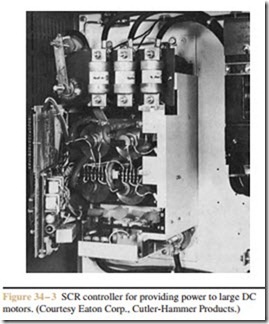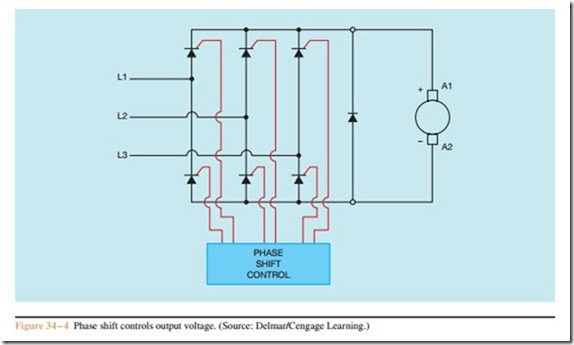The Armature Power Supply
The armature power supply is used to provide variable DC voltage to the armature of the motor. This power supply is the heart of the solid-state motor controller. Depending on the size and power rating of the controller, armature power supplies can be designed to pro- duce from a few amperes to hundreds of amperes. Most of the solid-state motor controllers intended to provide the DC power needed to operate large DC motors convert three-phase AC voltage directly into DC voltage with a three-phase bridge rectifier.
The diodes of the rectifier, however, are replaced with SCRs to provide control of the output voltage
Figure 34 – 3 SCR controller for providing power to large DC motors. (Courtesy Eaton Corp., Cutler-Hammer Products.)
(Figure 34 – 2). Figure 34 – 3 shows SCRs used for this type of DC motor controller. A large diode is often connected across the output of the bridge. This diode is known as a freewheeling, or kickback, diode and is used to kill inductive spike voltages produced in the armature. If armature power is suddenly interrupted, the collapsing magnetic field induces a high voltage into the armature windings. The diode is reverse biased
when the power supply is operating under normal conditions, but an induced voltage is opposite in polarity to the applied voltage. This means the kickback diode will be forward biased to any voltage induced into the armature. Since a silicon diode has a voltage drop of 0.6 to 0.7 volts in the forward direction, a high voltage spike cannot be produced in the armature.

